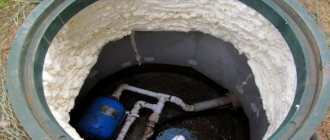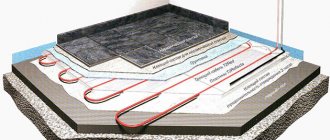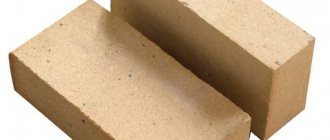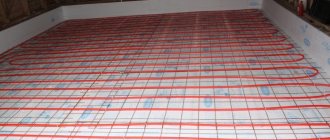Water supply in an apartment building, private house or country cottage is a common occurrence; water should be available at any time of the year. However, temperature fluctuations can make significant adjustments to the water supply process.
Insulation of external water supply in a private house
Apartment owners think little about how the water supply is organized, and owners of private houses are forced to take steps on their own to ensure that the water in the pipes does not freeze in winter. At the same time, we note that frost does not spare either steel or plastic pipes. The only way to keep water in liquid form and prevent damage to the water supply system is to fully insulate the water pipes. After all, unlike a heating pipe system, there is no warm medium.
Due to the fact that thermal insulation is carried out on your own site, we are not talking about an industrial scale of work, which means it makes sense to study how to insulate water pipes with your own hands.
Do underground water pipes need to be insulated?
If the pipes are laid below the soil freezing level - no, if above - yes.
The depth of the water pipeline is regulated by SNiP 2.04.02-84.
Depth of water supply SNiP 2.04.02-84 and SP 40-102-2000, MSP 4.01-101-2000
Let’s make a reservation right away that laying pipes at the correct depth neutralizes the effects of low temperatures; the material in this article is focused on those cases where, for certain reasons, the water supply system was buried at a shallow depth.
Useful tips
I told you all the methods that I once used. I think this is enough to insulate pipes in your dacha or country house. To ensure that the work is carried out as efficiently as possible, I will give you some tips:
After laying utility lines, I recommend drawing up a diagram of their location.
- When burying pipes in the ground, do not be lazy to draw up an accurate diagram of the engineering system. Particular attention should be paid to the location of the connecting elements. It is at these points that pipes often fail when the water inside freezes.
- It is necessary to insulate both internal and external communications at the same time. As a last resort, if you need to insulate a short section of the system (50-70 centimeters), cut out a piece of pipe from the sewer, put it on the water supply and fill it with construction foam. Suitable as a temporary option.
Methods for insulating water pipes outdoors (in the ground)
- increasing pressure in the water supply system;
- cable for heating a water pipe;
- thermal insulation for water supply pipes.
Creating high pressure in the water supply system
The water pipe will not freeze because the water will move at high speed. To implement this method, a pump is used to increase the pressure in the water supply system or a receiver that cuts into the pipe directly next to the pump.
Heating cable for water supply
Cable power 10-15 W (average price – 15 USD/m.p.). Excellent for heating pipes in the ground when they are placed at a shallow depth. According to the rules, it is not advisable to place any communications in the soil below the soil freezing level. There are situations in which this requirement is ignored. In this case, simple insulation of pipes will not give the desired result, because... the pipeline will in fact be located in water (in a humid environment that freezes in winter). Most of the insulation materials are not suitable for this mode of operation and do not provide proper thermal insulation.
Using a cable to heat the water supply makes it possible to lay pipes at a depth of up to 500 mm.
Heating cable for water pipe
The heating cable for insulating water pipes is wound along the pipe or around it with a given pitch. The pitch is determined by the power of the cable. The lower the power, the smaller the step. Methods for laying the heating cable are shown in the diagram.
Wiring diagram for installing a cable for heating a water pipe
Craftsmen and users note that insulating a water supply system by heating the pipe with a cable is the most reliable method for protecting pipes laid in the ground freezing zone.
Cable heating makes it possible to avoid freezing of water in the pipe, and, equally important, to quickly defrost frozen pipes. Such a need may arise at a dacha if it is intended for seasonal living. In this case, you can quickly prepare the pipeline for operation, because under natural conditions you can wait until May for complete defrosting (when laying pipes at the level of soil freezing). The cable is located both inside and outside the water supply pipe.
Note. Installing temperature sensors along the cable route will make it possible to monitor the cable temperature and regulate it manually or automatically.
Application of thermal insulation materials for pipes
This is the most cost-effective and easiest insulation method from the point of view of independent implementation. Let's look at it in more detail. Let's start with the best way to insulate a water supply system, what materials can be better used depending on specific conditions.
Technology
There are two ways to insulate the water supply system in your dacha from freezing. One option is to place the pipes underground at a depth where the ground does not freeze in the winter. To do this, you definitely need to find out to what depth the ground has frozen in your region for the last ten years. With this method, a trench is usually dug to a slightly greater depth, and expanded clay or slag waste is poured onto the bottom. After laying the pipe, slag or expanded clay is also poured on top, and then covered with sand and soil.
The second method is to place the winter water supply at a depth of 50 to 70 cm, but be sure to use good insulating materials. In this case, a trench is dug, its bottom is leveled, a layer of sand from 10 to 15 cm is poured. Before laying, a so-called “shell” of insulation is put on the pipes. Depending on the climate, you can additionally use various insulating materials, which are produced in the form of rolls. After the pipes are laid in the trenches, they are covered with soil.
True, it is worth noting one more way to insulate the water supply at the dacha and protect it from freezing and icing in the winter. This is the use of a heating cable, which is a self-regulating wire connected to the electrical network.
It is called self-regulating because it can change its resistance depending on the ambient temperature and, accordingly, heat up or cool down. It is usually placed on the water supply in a straight line or wrapped around the pipes. When wrapping a pipe, the distance between the spirals can vary from 5 to 30 cm.
Aluminum adhesive tape is used for fastening. In order for the heat from the heating cable to be evenly distributed over the entire surface of the plastic pipe, it is pre-wrapped with foil.
It is better to use a self-regulating cable together with rolled protective materials, since this reduces the risk of freezing of the winter water supply and reduces the cost of electricity used to heat the water supply pipe.
Thermal insulation for water supply pipes
It is not difficult to get confused in the wide range of thermal insulation materials. To choose the best option, you need, at a minimum, to know the main types and types, key characteristics and features.
Thermal insulation of water pipes is carried out with various insulation materials, which are grouped below (in the form of a classification) according to the principle of unity of insulation technology.
Materials for insulating water pipes
Types, types, varieties and rules for choosing pipe insulation.
Rigid insulation
This category includes polystyrene foam, polystyrene foam (2560-3200 rubles/cube) and Penoplex (3500-5000 rubles/cube), thermal insulation properties and price depend on density.
Polystyrene foam is an excellent insulator and has a relatively low cost (compared to other materials). However, it is quite difficult to insulate a round pipe with a rigid insulation board. To insulate pipes, special shells (hard boxes) are used - shells in which pipes are placed, and the space is filled with soft insulation.
Laying water pipes in a foam box
Roll insulation
This segment includes: polyethylene (as an additional material), foil penofol (50-56 rubles/sq.m.), mineral wool (70-75 rubles/sq.m.) and glass wool (110-125 rubles/sq.m.) ), furniture foam rubber (250-850 rubles/sq.m. depending on thickness).
Insulating water supply pipes with rolled thermal insulation is also fraught with difficulties, which lie in the hygroscopicity of the material. Those. insulation loses its properties when exposed to moisture, which means it has a narrower scope of application, or needs additional protection. Plus, you need to think about how to attach the insulation to the pipe.
Basalt heat-insulating mats and foam rubber for insulation of water pipes
Segmental (shell) insulation
Pipe insulation casing is the most progressive option for pipeline thermal insulation. The shell for insulating the water pipe ensures maximum tightness and, as a result, creates a reliable thermal insulation layer.
There are types of segmental insulation:
Polystyrene foam shells for insulating water pipes are rigid (thermal insulating casing for pipes is a shell made of polystyrene foam (PPU) or foam plastic. Price from 190 rubles/m.p., depends on the thickness and diameter of the cylinder);
Pipe insulation made of foamed polyethylene for insulation of soft water pipes (pipe insulation made of foamed polyethylene, cost from 28 rubles/m.p. with a thickness of 13 mm); Material prepared for the site www.moydomik.net
Basalt cylinders for insulation of water pipes, basalt cylinders for pipes (from 15 rubles/m.p. with a thickness of 30 mm. (from 70 rubles/m.p. for foil-coated basalt cylinders).
Sprayed insulation (PPU)
The peculiarity of insulation by spraying polyurethane foam is that thermal insulation is applied to the surface of the pipe, ensuring 100% tightness (the cost of components for polyurethane foam filling starts from 3.5 euros per kg). The number of components is determined by the thickness of the fill; work is paid additionally). On average, the cost of insulation with sprayed polyurethane foam is 15-20 dollars/m.p.
Sprayed insulation also includes heat-insulating paint for pipes. You can apply it yourself, because... Thermal paint is sold in aerosol cans. A layer of paint of 20 mm. replaces 50 mm of basalt wool insulation. In addition, this is the only material that is not susceptible to damage from rodents.
Insulation of water pipes by spraying polyurethane foam (PPU)
Water pipe insulated with polyurethane foam (PPU)
When choosing thermal insulation material for insulating water supply pipes, you need to take into account the following factors:
- pipeline installation location. Insulation of pipes laid on the ground and located underground is carried out in different ways, even when using the same materials (it is also important to take into account whether the pipes are laid before or below the freezing level);
- frequency of pipeline operation. For example, in a country house that is not intended for permanent residence, it is enough to simply avoid a pipe rupture. To do this, a receiver is installed or the water supply is insulated with a cable. But in a private house it is necessary to ensure a year-round water supply. Here you need to approach the choice of insulation more carefully;
- thermal conductivity indicator of pipes (plastic, metal);
- resistance to moisture, combustion, biological activity, ultraviolet radiation, etc. determines the need to protect the insulation from these factors;
- ease of installation;
- price;
- life time.
O-rings and seals
They are used if one of the parts has a limiting collar into which the end of the second rests. A gasket is placed between the contacting surfaces if the collar is internal, and a ring if it is external. Thread sealing is not required; on the contrary, this is considered an error.
It is better to use rings and gaskets made of soft silicone for cold water supply, and in the hot water supply system it is better to install seals made of heat-resistant rubber or paronite.
The advantage is the speed of installation: just install the gasket or put on the ring and tighten it. Disadvantage: due to the requirement for a collar, they are used in a narrow segment.
Rings and gaskets are used to seal connections when installing fittings and hoses with a union nut, and faucet axle boxes in mixers.
None of the materials considered can replace all the others. It is always better to keep a set of several seals on hand and use them depending on the situation.
Source
How to insulate a water pipe with your own hands
The location of the pipes is another important factor that must be taken into account when choosing insulation. Indeed, depending on where the pipes are located (in the ground, basement, cold attic, unheated room), the temperature and humidity conditions are determined, as well as the ease of installation of the insulation and the need for its additional protection.
Insulation of water pipes on the street
Water pipes are rarely laid by air or on the soil surface. Rather, in this case, the part of the pipeline that runs directly under the house or at the junction of the pipe with the pump, meter, or inside the distribution well needs insulation.
The specificity of insulation in this case is such that the pipe is insulated with any insulation that is capable of ensuring a sufficient tightness of the fit and is not exposed to moisture. As a rule, the thickness of the insulation intended for above-ground insulation of pipes is higher than for underground insulation. At this stage, it is important not only to insulate the pipe, but also to ensure protection of the thermal insulation material, in particular from getting wet.
Note. The most dangerous place from the point of view of freezing is the pipe exiting to the surface. To insulate this unit, it is necessary to use materials with greater thermal insulation capacity or lay it in two or three layers.
Insulation of water pipes in the ground
Such insulation will be needed only if the pipes are laid above the soil freezing level. To insulate a pipeline in the ground, you can use any material, including rigid insulation.
It is worth noting that the insulation of external water supply does not end with the installation of insulation. It is important to protect the insulation from getting wet. To do this, a film, roofing material is wound over the main thermal insulation material, or a plastic box is installed.
Protection of wells and wells in winter
In winter, water comes into the water supply system at the dacha from a well, a well or the main water supply system, if one is available. Most often, the source of water in dachas, and even in the private sector, is an ordinary well of not very deep depth. The advantage of such a source is that a high-power pump is not required to supply water.
In addition to the pump for such a water supply system, it is advisable to use a hydraulic accumulator, which is a large-capacity barrel. It accumulates a certain supply of water, which can be used at any time. This is especially true during a power outage.
In addition, the hydraulic accumulator helps protect the water supply from water hammer and pressure surges. It and the pump are best installed in a warm utility room where they can be easily maintained.
In addition to pipes, water sources need protection from frost: wells and wells. In order to prevent the water in the well from freezing, a caisson well or pit with a depth of one and a half to two meters is installed, where a person can safely go down the stairs to carry out maintenance on the pump or the well itself.
The walls of the pit can be made of brick, plastic, cast from concrete and made of concrete rings. They must be sheathed with foam boards, the thickness of which reaches more than 10 cm, or lined with mineral wool. The top of the well must be covered with a powerful lid, well insulated with glass wool or other material. Waterproofing is also carried out to prevent water from entering the coffered well.
Water in wells lined with wooden beams rarely freezes in winter. To protect such wells, a thick protective wooden cover is installed during the winter.
But concrete wells require quite powerful insulation, especially if the water is above the freezing level of the soil. To do this, the well ring is dug out to the freezing level, and then insulated with polystyrene foam compressed in the form of half rings.
Before starting work, the seams in the concrete are treated with a special sealant, then foam plastic is installed. To protect the insulation from sunlight, it is covered with plaster or paint.
It will be useful to read:
How to install a heating cable for heating pipes
For installation, prepare: foil tape, thermal insulation material, heating cable (power 20 W per linear meter).
Installing a heating cable on top and inside a water pipe
Technology for insulating water pipes with cable:
- the pipe along its entire length (from the well/well to the house) is glued with foil tape;
- The heating cable is laid in a convenient way with the same pitch. For a 20 W cable, a pitch of 100-150 mm will be optimal. For a less powerful cable, the pitch is reduced. The most convenient way to lay the cable is to wrap the pipe in a spiral;
- the cable is fixed with foil tape;
- Insulation is installed on the pipe. Pipes made of foamed polymers, basalt cylinders or polyurethane foam shells are placed on the pipe. In this case, it is necessary to ensure that the diameter of the pipe corresponds to the internal diameter of the segmental insulation. Before starting work, roll insulation is cut into strips, which are wrapped around the pipe and secured with clamps or wire. Their task is to hold the insulation in a given position.
Note. The main thing when installing insulation is to minimize the number of joints that form cold bridges. Laying the heat insulator in two layers with an offset helps to completely eliminate them.
- the insulation is fixed to the pipe with tape (plumbing tape). The tape is wrapped very tightly. The main task of the winding is waterproofing, i.e. prevent groundwater from entering the insulation;
- additionally insulate the pipe at the point where it reaches the soil surface. The following options are offered: additional winding with insulation or arrangement of a box in which the insulation will be placed.
Advice. To avoid the risk of freezing of the water supply at the entrance to the house, it is advisable to wind the heating cable until it exits the wall in the house.
Installation of cable for heating pipes - video
Materials used
When I was little, my grandfather and I insulated a piece of pipeline (3 meters) that went from the well to the storage room. At that time, old military pea coats, soldiers' blankets and other similar things were perfect for this (I think you guessed what my grandfather worked for).
However, nowadays there are many modern building materials that will cope with the tasks assigned to them much better, and their purchase will not make a bottomless hole in your family budget.
To protect pipes from freezing, various thermal insulation materials are used.
On the other hand, some people find it difficult to know what to choose. Before giving specific advice, I want to list the requirements that the insulation must meet so that you can use it for finishing pipes:
- have good heat-retaining properties that do not change under the influence of external conditions (humidity, temperature, mechanical stress, deformation, damage, and so on);
- have a long service life, resistance to chemicals and biocorrosion;
- have hydrophobic functions, do not change their technical characteristics and performance properties when wet;
- It is good to withstand exposure to high temperatures without changing the thermal conductivity coefficient and service life.
To choose a specific option, you need to know the diameter and material of the water pipes laid on your site, the depth of their installation, length and many other parameters.
I’ll tell you about the most common options, and you can choose for yourself:
- Insulation based on glass fiber (glass wool). Most suitable for finishing metal-plastic pipelines. I worked with such insulation materials as Izover, URSA, Knauf Insulation and others. They differ slightly from each other in certain parameters, but they do not affect the efficiency of operation.
Glass wool (pictured) is not the most effective and convenient, but inexpensive way to insulate pipes.
Considering that glass wool has a low density, when wrapping it around pipes that you are then going to bury in the ground, you need to figure out how to protect it from mechanical stress. In my practice, I used roofing felt, geotextiles or large-diameter sewer pipes.
In general, not the most convenient option, which requires a lot of time and effort.
- Basalt heat insulator. The material is produced in the form of ready-made shells for a certain diameter of water or sewer pipes. Thanks to this, they are very easy to install on utility lines.
Basalt thermal insulation is much more convenient and protects pipes well from freezing.
Suitable for insulating pipelines both in a private house and underground, as it can withstand strong mechanical stress and high loads . In some cases, in addition to a layer of basalt fiber, manufacturers protect their products with foil insulation or glassine on top, which further increases the performance properties of the material.
However, as you understand, we have to pay for all these advantages. The cost of the considered insulation cannot be called affordable.
- Expanded polystyrene. This is the material I worked with most often. It differs from other products in its affordable price and considerable assortment. There are varieties with and without an external protective layer, for installation on large and small diameter pipes, and so on.










